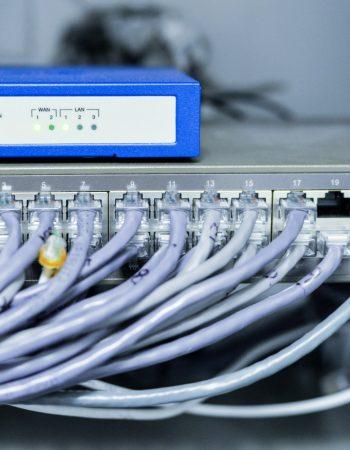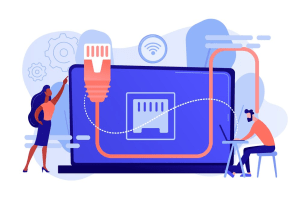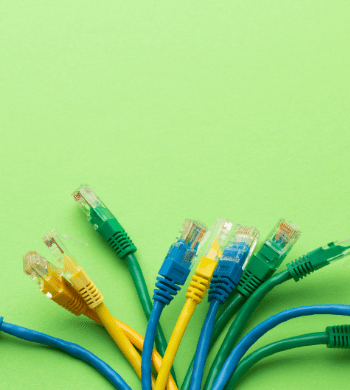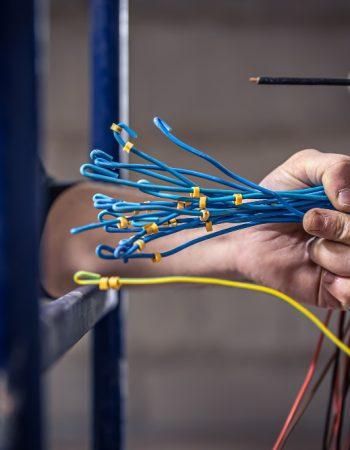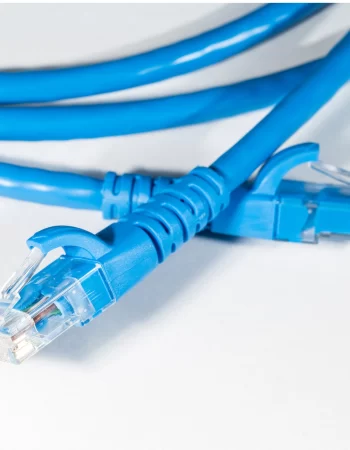There are various types of cable available such as twisted pairs and coaxial cables according to ideal premises. When a network convection wants maximum speed and stability, businesses should wire the connection for the best results such as better speed, lower latency, and more reliable connection to speed up business operations.
Data network cables link one network component to another or connect two or more nodes to share resources to cut operational costs and reduce efficiency. Depending on the effectiveness and physical and logical topologies, you will need to use different cables within the network topology.
Selecting the perfect data network cables for your network infrastructure is crucial for ensuring satisfied performance, reliability, and scalability. The blog will discover some major key factors to consider at the time of choosing a data cable. It will also highlight types of cables with their application to give a better understanding to you to make an informed decision.
Factors to Consider
Bandwidth Requirements
Consider the bandwidth needs of your network to determine the suitable cable type. On the other hand, the business should navigate the environmental conditions in which the cable will be deployed. Factors such as temperature fluctuations, moisture, and electromagnetic interface (EMI) can impact cable performance and longevity. It depends upon the need of the user, application that requires higher bandwidth uses fiber optic cables.
Budget and Distance
Businesses have to set a particular budget for their cabling project and explore cost-effective options that meet their performance requirements without compromising on quality as well as the reliability of network cabling infrastructure.
On the other hand, considering the distance over which the cable will be installed is very crucial. For shorter distances, copper cables are the best choice as compared to any other to other.
Types of Data Cables
Twisted Pair Cable
The twisted pair has two copper conductors with a plastic substance material to reduce unwanted electromagnetic interference. It includes Category 5e and Category 6 which are commonly used for ethernet networking. One of the wires transmits signals to the receiver and the other acts only as a ground reference. This data network cables is for home and corporate communication networks. Twisted-pair cables can also be used in several applications of communication as well as networking such as telephone lines and local areas network systems.
Fiber Optic Cable
You can call it an optical fiber cable, which is an association similar to an electrical cable but has one or more optical fibers that transmit light. The optical fiber components are usually in plastic layers and a protective tube suitable for the environment to install the cables. Various types of cables use diverse applications, for example, long-distance communications or providing a high-speed data connection between different parts of a network within the premises.
Fiber-optic cables are responsible for transferring more data over longer distances and faster than other mediums. This technology provides homes and businesses with fiber-optic internet, phone, and TV services.
Ethernet Cable
An Ethernet crossover cable connects computing nodes directly within the network. It links two components of the same type, for example, when connecting two computers or switches within the network. However, most network components nowadays support auto crossover technologies. This data network cables including Cat 5e and Cat 6 is specifically designed for ethernet networking as well as supports various ethernet standards to offer different levels of performance and bandwidth for cabling services. Ethernet cable is also used to connect a laptop and desktop PC to a router, modern, internet hub, and printer which makes them a perfect choice for businesses to set up a strong infrastructure.
Choosing the Right Data Cable
- Understanding your organization’s unique needs in terms of bandwidth, distance, and environmental factors is the first step in setting up your network conditions. For example, because of their high bandwidth capabilities and power to electromagnetic activities, fiber optical cables might be the best choice if you need high-speed data transmission over long distances. But taking scalability into account means choosing cables that will be able to withstand development in the future as well as advances in technology without requiring regular maintenance or upgrades.
- Consulting with experienced network engineers or cabling professionals is essential to ensure that your chosen cables are consistent with your being structure and misbehave with industry standards and regulations, similar to TIA/ EIA and ISO/ IEC norms. Investing in high-quality lines from estimable manufacturers is vital for ensuring trustability, performance, and life. Poor-quality lines may affect signal declination, connectivity issues, and increased maintenance costs over time.
- Finally, regular examination and maintenance of your cabling structure are necessary to identify and address any issues such as string damage, declination, or connectivity problems before they escalate into critical failures. By following these guidelines, you can ensure that your network cabling structure meets your current and future requirements while maintaining optimal performance and trustability
Final Words
In conclusion, opting for the right data cables for your network needs is a crucial decision that can significantly impact the performance, trustability, and scalability of your network solutions. By just setting your conditions, consulting with experts, and investing in high-quality cables, you can ensure that your network can meet current demands while accommodating future growth and advancements.
Every system requires some specific requirements and every cable type has different specifications and capabilities to fulfill them. These will also affect the network design that a business considers for a dependable and secure network structure. Regular maintenance and monitoring are essential for relating and addressing any issues instantly, minimizing time-out, and maximizing lifespan. With the right approach to cable selection according to your network needs, you can make a strong and effective network that supports your organization’s goals and objectives for times to come.


